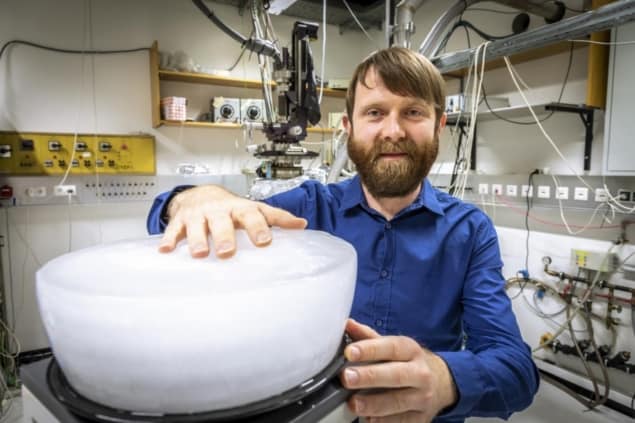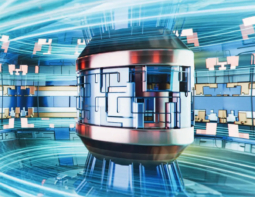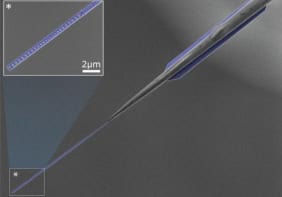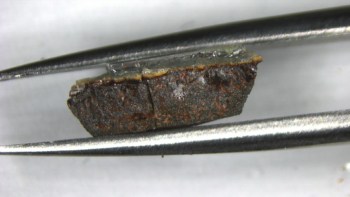
Water molecules on cold surfaces require some additional heat before they can form ice, an international research team has discovered. Their novel experiment found that water molecules on a cold graphene surface initially repel each other, until additional energy allows them to reorient themselves and form electrostatic bonds. The findings fill an important gap in our knowledge of ice formation – and could lead to new ways of controlling the freezing process.
When liquid water encounters a cold surface, ice can quickly form through the process of nucleation whereby individual water molecules coalesce bond with each other to form ever larger solid crystals. While nucleation has been widely studied on the macroscopic scale, it is difficult to study on the molecular scale because it occurs on a timescale of tens of picoseconds, which is too fast for conventional instruments.
Now researchers led by Anton Tamtögl at the University of Cambridge (now at the Graz University of Technology) and Marco Sacchi at the University of Surrey have observed nucleation on the molecular scale using a technique called helium-3 spin echo. First developed at Cambridge, the technique involves scattering a beam of spin-polarized helium atoms from molecules on a surface. The atoms arrive at the surface in wave packets that are separated by regular time intervals on the picosecond scale. The motions of molecules on the surface causes differences in the phases of successively scattered wave packets, which is detected using a spin-echo technique.
Dipolar repulsion
The experiments revealed that water molecules initially attach to a cold graphene surface with the same orientation: the two hydrogen atoms are close to the surface while the oxygen atom is elevated above the surface. Water molecules are electric dipoles (the oxygen end is negatively charged, and the hydrogen end positively charged) so there is a dipolar electrostatic repulsion between these similarly oriented molecules and this suppresses nucleation. The team found that this barrier can only be overcome by heating the molecules to change their orientations so that their oppositely charged poles can attract each other, initiating nucleation.

Lasers peer into a mysterious region of supercooled water
To understand their observations, Tamtögl and colleagues did computer simulations of the interactions between adsorbing water molecules at varying energies. As they hoped, altering the amount of applied heat switched nucleation on and off – agreeing with experimental observations.
The team’s results could lead to new techniques for controlling ice formation on wind turbines, aircraft and telecommunications equipment. They could also provide important insights into ice formation and melting in glaciers and ice sheets – allowing researchers to better quantify the effects of climate change on the cryosphere.
The research is described in Nature Communications.



